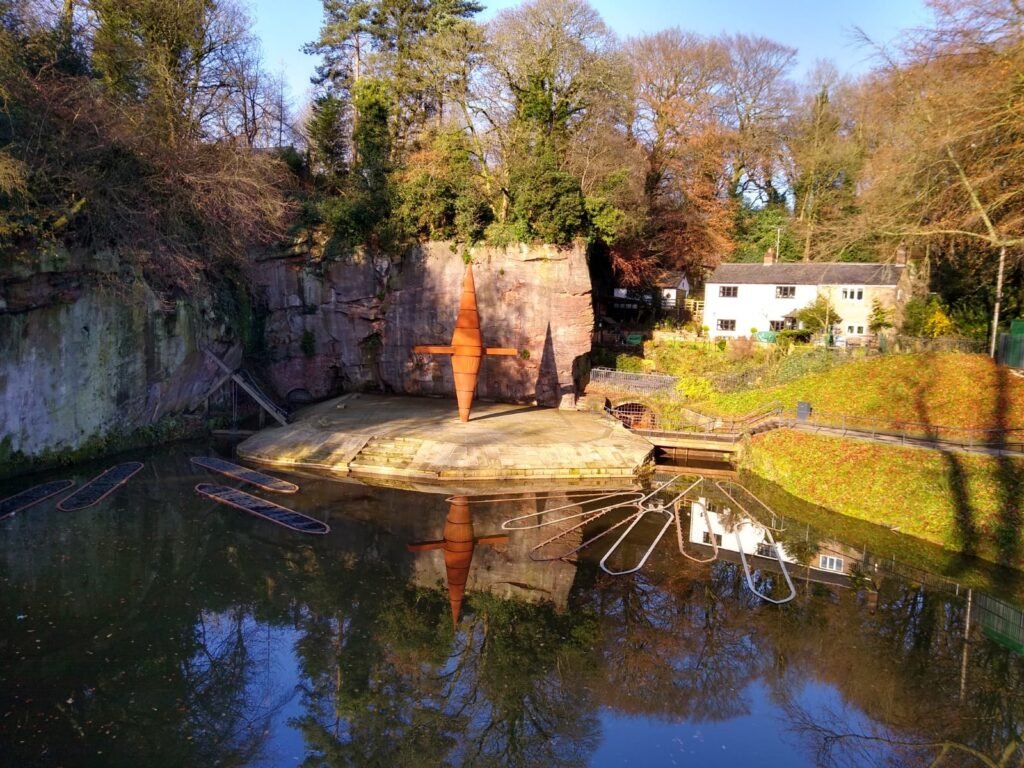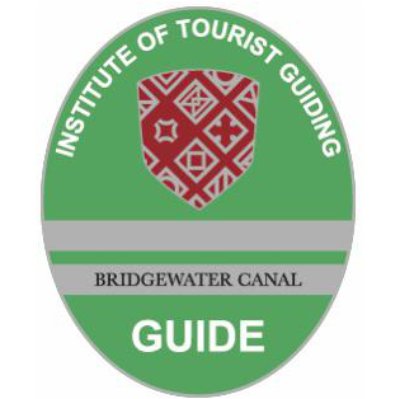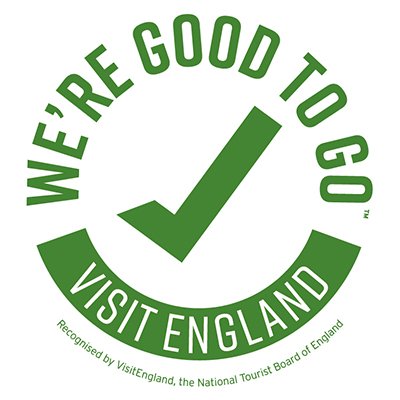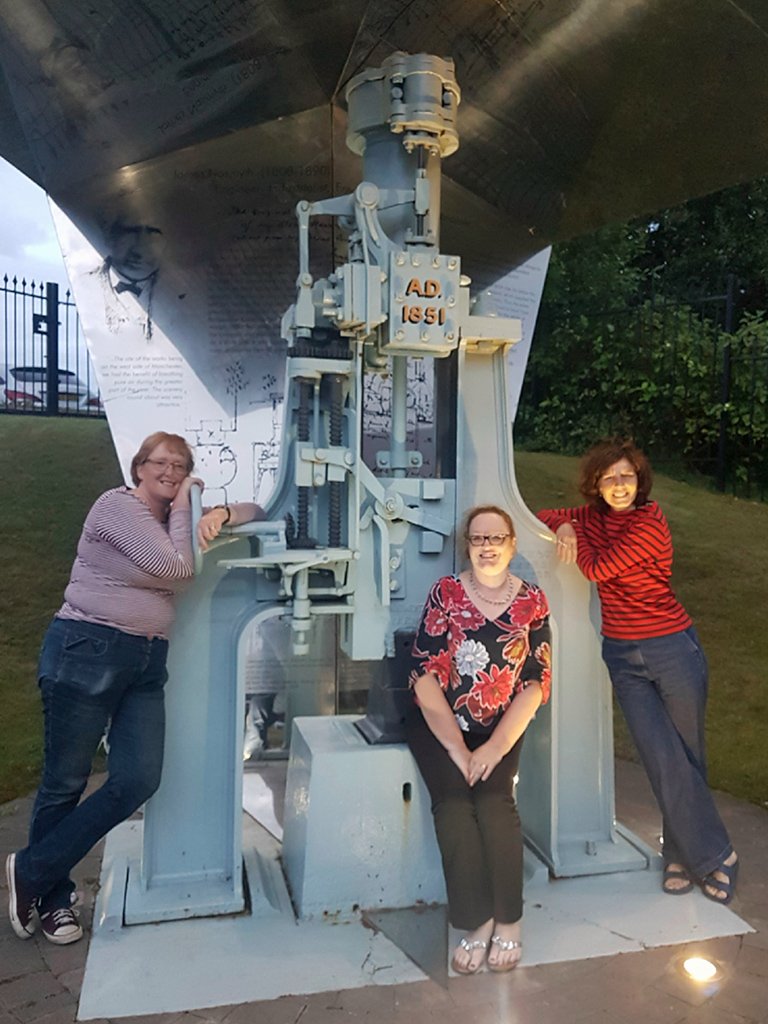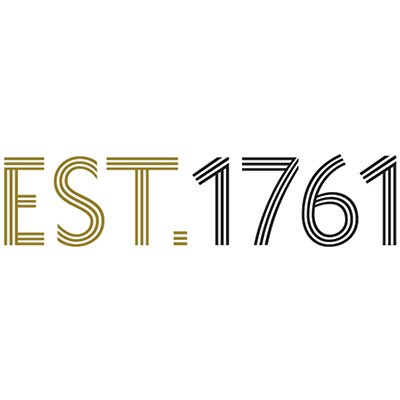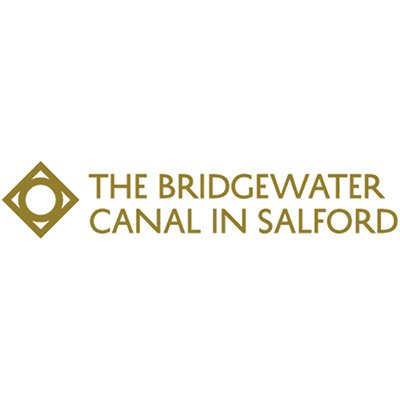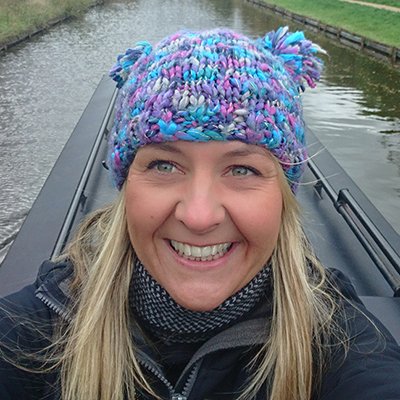| 1647 A ‘sough’ (tunnel) was cut into the cliff face of the Delph quarry in Worsley to help drain water from the mines on Walkden Moor. |
| 1681 Scroop Egerton born. |
| 1712 Thomas Steers surveys the Rivers Mersey & Irwell with a view to making them fully navigable between Manchester and Liverpool. |
| 1716 James Brindley born in Tunstead, Derbyshire. |
| 1720 Scroop Egerton became 1st Duke of Bridgewater. |
| 1721 Mersey & Irwell Navigation act passed to make the route navigable between Manchester and Warrington. The Mersey was already navigable between Warrington Bank Quay and Liverpool. |
| 1724 Work begins on the Mersey & Irwell Navigation and will involve constructing 8 weirs with associated locks and ‘cuts’ across loops in the rivers. |
| 1724 John Gilbert born in Staffordshire. |
| 1727 John Egerton born, son of Scroop Egerton. |
| 1731 The ‘sough’ leading to Worsley Delph was over a mile long by this time. Almost a prelude to the underground canal later devised by John Gilbert |
| 1736 Mersey & Irwell Navigation is made navigable between Manchester and Warrington Bank Quay. |
| 1736 Francis Egerton born, son of Scroop Egerton. |
| 1737 Act passed to make Worsley Brook navigable from Worsley to the River Irwell near Barton. The work was never carried out. |
| 1745 Scroop Egerton died aged 63. Son John became 2nd Duke of Bridgewater aged 17. |
| 1748 John Egerton died aged 20. His younger brother Francis became 3rd Duke of Bridgewater aged 11 – Became known as the ‘Canal Duke’. |
| 1752 James Brindley works on the Clifton (Wet Earth) Colliery. |
| 1753 John Gilbert becomes the Worsley agent of the Canal Duke. |
| 1754 A group of Manchester businessmen petitioned a bill promoting a canal between Salford, Worsley, Leigh and Wigan. It was thrown out of parliament after objections by landowners, except the then 18 year old 3rd Duke of Bridgewater. |
| 1757 Francis Egerton comes into his full inheritance at age 21. |
| 1757 John Gilbert moved to Worsley. |
| 1758 Francis Egerton’s petition for 1st Bridgewater Canal Act presented to Parliament. |
| 1759 James Brindley meets John Gilbert at his Ecton lime kiln, near Hulme End in Staffordshire to discuss the canal proposals. |
| 1759 1st Bridgewater Canal Act passed allowing construction of a canal from Worsley to Salford on the north side of the River Irwell. Also, Worsley to Hollin Ferry on the River Mersey via Chat Moss. |
| 1759 John Gilbert moves into Worsley Old Hall. |
| 1759 James Brindley’s first recorded visit to Worsley for a meeting with Francis Egerton and John Gilbert. The canal triumvirate is formed. |
| 1760 Petition for 2nd Bridgewater Canal Act presented to Parliament. |
| 1760 James Brindley visits Parliament and presents a model of the proposed Barton Aqueduct over the River Irwell made from a round of Cheshire Cheese! |
| 1760 2nd Bridgewater Canal Act passed allowing diversion of canal to cross the River Irwell at Barton and on to Castlefield in Manchester. |
| 1761 Canal opens between Worsley and Longford Bridge in Stretford, crossing the River Irwell via Barton Aqueduct. |
| 1761 Just over a mile of the canal from Worsley to Hollin Ferry were built onto Chat Moss, near Botany Bay Wood. This became known as the Moss Canal and was used to get rid of waste from the underground canals and night soil from Manchester. |
| 1761 Petition for 3rd Bridgewater Canal Act presented to Parliament. |
| 1762 3rd Bridgewater Canal Act passed allowing extension of canal from junction at Stretford (known as Waters Meeting) to a connection with the River Mersey at Hempstones, near Runcorn. |
| 1763 Canal reached Cornbrook, 1 mile from the proposed terminus in Manchester. |
| 1765 Canal is finally opened to the first wharf at Castlefield in Manchester. |
| 1766 Canal reached Lymm. |
| 1766 4th Bridgewater Canal Act passed allowing branch canal from Sale to Stockport. This was never built. |
| 1766 Trent & Mersey Canal Act passed. James Brindley is appointed Surveyor-General. The act allows Bridgewater Canal to divert away from Hempstones and join the Trent &Mersey Canal at Preston Brook and then onto the River Mersey at Runcorn. |
| 1767 Bollin Aqueduct collapsed due to flooding and is rebuilt. |
| 1768 Canal reaches Lymm. |
| 1771 Canal reaches Stockton Heath near Warrington. |
| 1772 James Brindley, canal engineer, died aged 56. |
| 1773 Flight of 10 locks at Runcorn joining canal to River Mersey are opened. The only locks on the Bridgewater Canal system. However, canal was not yet complete due to gap near Norton Priory owing to a land dispute with Sir Richard Brooke. |
| 1775 A compromise is reached at Norton Priory and work to join the already constructed parts of the canal can be completed. |
| 1776 Bridgewater Canal is completed and opens between Manchester and Runcorn. |
| 1777 Trent & Mersey Canal completed and joins the Bridgewater Canal at Preston Brook. This enables through canal traffic from the North West to the Midlands. |
| 1786 The first year that the whole canal project made a profit. The Canal Duke had paid the entire cost of building and it made him one of the richest men in the country before his death. |
| 1794 Rochdale Canal Act passed – including joining to Bridgewater Canal at Castlefield. |
| 1795 John Gilbert designs the inclined plane to transport boats between different levels of the underground canals. |
| 1795 5th Bridgewater Canal Act passed allowing extension of canal from Worsley to Leigh. The aim is to join with the Leeds & Liverpool Canal there. |
| 1795 John Gilbert died aged 71 and was buried in Eccles Parish Church. |
| 1795 Work begins on the inclined plane in the underground canals. |
| 1797 Inclined Plane on the Underground Canal opens. Unfortunately, its designer John Gilbert did not live to see it in operation. |
| 1799 Leigh Branch of the canal opened between Worsley and Leigh. |
| 1799 Experiments with steamboat ‘Bonaparte’ which failed due to poor performance and causing damage to canal banks. |
| 1803 Francis Egerton, ‘The Canal Duke’ died aged 67. Canal then managed by Bridgewater Trustees. |
| 1804 Rochdale Canal opened fully opened from Sowerby Bridge to Lock 92 at Castlefield where it joined the Bridgewater Canal. |
| 1807 Packet Boat service begins on Mersey & Irwell Navigation in direct competition to that on the Bridgewater Canal. |
| 1820 Leeds & Liverpool Canal finally opens to Leigh where it joins with the Bridgewater Canal. |
| 1827 A new flight of locks is opened at Runcorn replacing the original flight opened in 1773. |
| 1831 Macclesfield Canal opens enabling faster movement of traffic from the North West to the Midlands (see 1777). This impacts on some Bridgewater Canal traffic. |
| 1838 Flight of 3 Hulme Locks built to join Bridgewater Canal to Mersey & Irwell Navigation in Manchester. |
| 1845 The Bridgewater Trustees purchased the Mersey & Irwell Navigation. |
| 1851 Queen Victoria arrives at Patricroft by train from Liverpool and travels along the canal to Worsley New Hall as guest of the 1st Earl of Ellesmere. |
| 1851 Queen Victoria returns from Worsley to Patricroft along the canal before boarding a train to London. |
| 1868 Packet Boat services finished on the canal. |
| 1872 Bridgewater Trustees sold the canal and the Mersey & Irwell Navigation to the Bridgewater Navigation Company which took control in 1874. |
| 1874 A fleet of 10 steam tugs introduced on the canal to haul 3 or 4 flat barges at a time. Eventually there were 27 of these, such was there success. |
| 1885 1st Manchester Ship Canal Act passed. |
| 1887 Manchester Ship Canal Co. purchased the Bridgewater Navigation Company and created its Bridgewater Department to manage operations on the Bridgewater Canal. |
| 1887 Last coal carried on the underground canal as it is being moved by rail. |
| 1893 Barton Swing Aqueduct was opened to traffic. This allowed for Brindley’s Stone Aqueduct to be demolished. |
| 1894 Manchester Ship Canal opens to traffic – the Bridgewater Canal crosses the Ship Canal via Barton Swing Aqueduct. |
| 1894 Queen Victoria officially opens the Manchester Ship Canal at Mode Wheel Lock, Salford. |
| 1905 Monton Bridge – New bridge that can carry electric trams across the canal opens. The original stone road humpback was demolished. |
| 1957 Traffic between the Bridgewater and Rochdale Canals ceased. |
| 1962 Single 12’ lock built at Hulme to replace the 3 previous locks (see 1838). |
| 1964 Last traffic through Runcorn Locks. |
| 1966 Runcorn Locks closed and filled in after falling into disuse. |
| 1971 Bridgewater Canal sprang a leak near Bollin Aqueduct and a hole 90’ wide developed leading to closure of the canal. It signalled the end of most freight traffic over the canal. |
| 1973 Bridgewater Canal repaired and reopened. |
| 1974 Formation of the Bridgewater Canal Trust due to the canal breach of 1971. The canal was now used mainly by pleasure craft. |
| 1996 Pomona Lock built to replace the 1962 Hulme Lock to join the Bridgewater Canal with the new Salford Quays development. |
| 2005 ‘Monton Lighthouse’ is built next to the canal and soon becomes a popular landmark. |
| 2011 250th Anniversary celebrations of the opening of the canal in 1761. |
| 2011 Salford City Council’s Bridgewater Canal Masterplan adopted. |
| 2019 Official opening of the newly restored Worsley Delph. |
